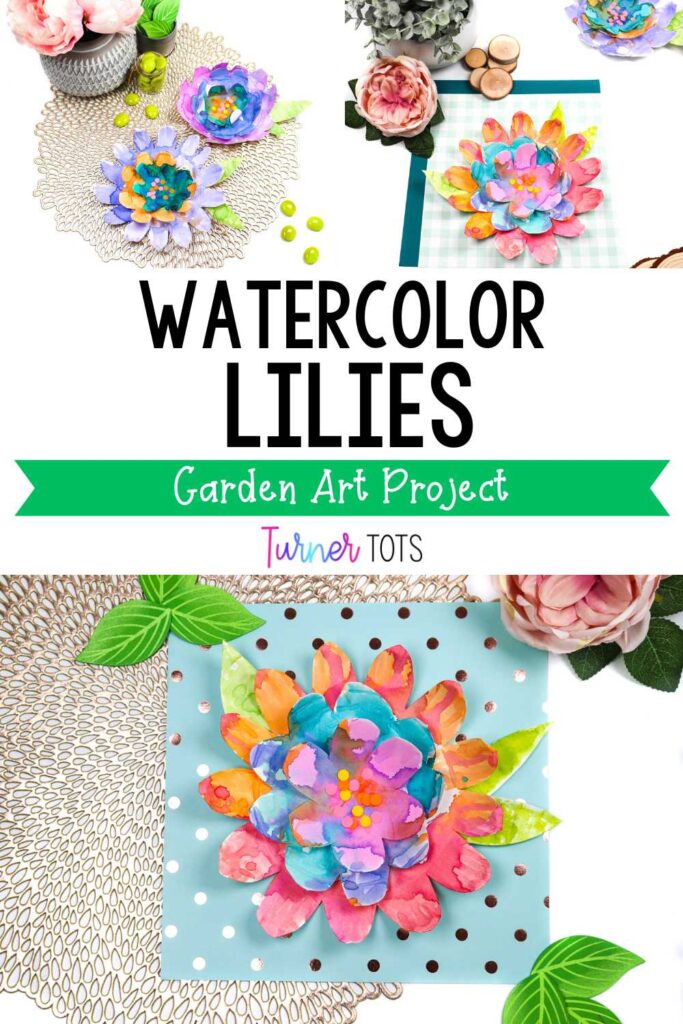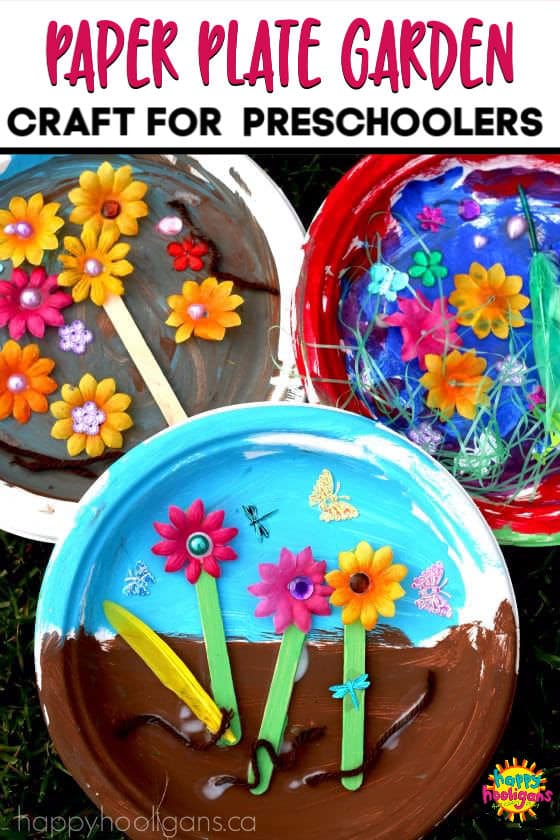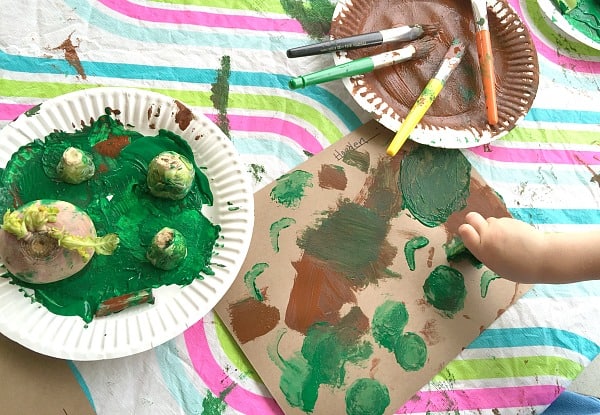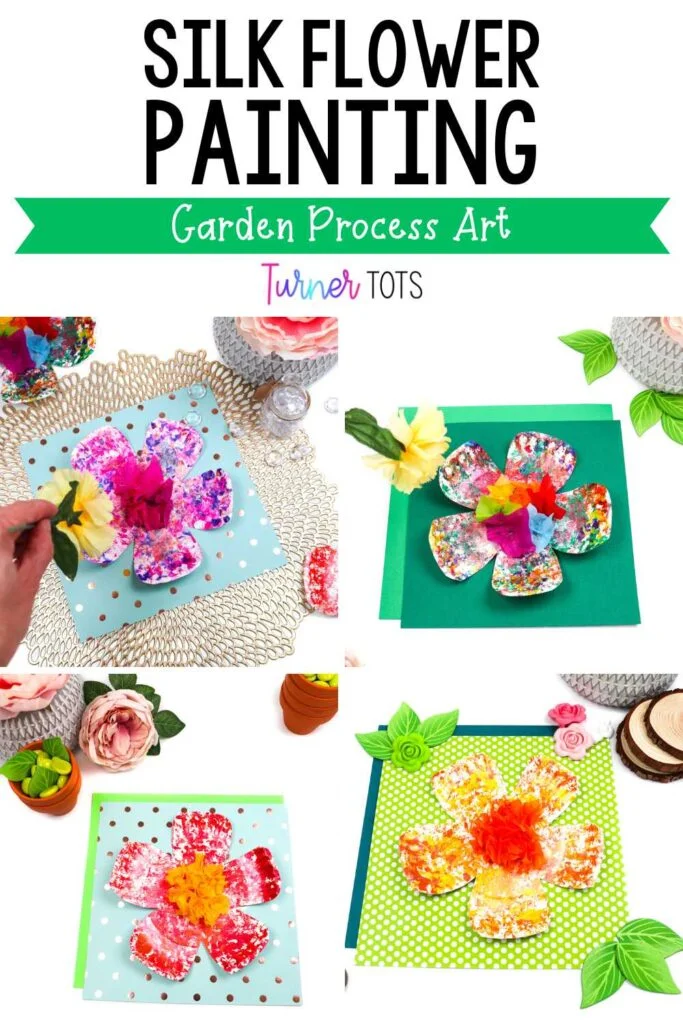Imagine the joy of watching your preschooler discover the wonders of nature through art. Gardening art activities can spark creativity and bring learning to life.
These activities offer a perfect blend of fun, learning, and nature exploration. If you’re looking for ways to engage your child in meaningful play, you’re in the right place. These simple, yet enriching activities can transform any ordinary day into a magical adventure.
Ready to dig into the colorful world of gardening art with your little one? Let’s explore how you can cultivate creativity and curiosity right in your own backyard.
JUMP TO TOPIC
- 1 Benefits Of Gardening For Preschoolers
- 2 Essential Gardening Tools For Kids
- 3 Planting Seeds And Watching Them Grow
- 4 Creating Garden-themed Art Projects
- 5 Incorporating Stories And Songs
- 6 Nature-based Sensory Activities
- 7 Exploring Colors And Textures
- 8 Organizing A Garden Art Show
- 9 Frequently Asked Questions
- 10 Conclusion
Benefits Of Gardening For Preschoolers
Gardening art activities offer preschoolers a fun way to explore nature. These hands-on tasks boost creativity and imagination. Kids learn about plants and colors while developing fine motor skills.
Gardening is a wonderful way to introduce preschoolers to the natural world. It offers them countless benefits that extend beyond just planting seeds and watching them grow. As a parent, you might wonder how this activity could influence your child’s development. Let’s dive into how gardening can be a valuable learning tool for young children.Boosts Physical Development
Gardening involves plenty of physical activities, from digging to watering plants. These movements help improve your child’s motor skills and muscle strength. Imagine your preschooler happily squatting and reaching for a tiny flower. Such activities enhance their coordination and balance.Encourages Curiosity And Exploration
Children are naturally curious, and gardening fuels this curiosity. They’ll ask questions about why plants need sunlight or how seeds grow. These moments are perfect opportunities for you to engage them in conversation. You might find yourself learning alongside them.Enhances Emotional Well-being
Spending time outdoors in a garden can have a calming effect on preschoolers. Being surrounded by nature often reduces stress and anxiety. Picture the joy on your child’s face as they see their very first sprout. These small victories boost their confidence and happiness.Fosters Responsibility And Patience
Gardening teaches children to care for living things. They’ll learn the importance of watering plants regularly and waiting for them to grow. This patience and sense of responsibility can extend to other areas of their life. Have you noticed how eager they are to help with household chores after tending to their plants?Promotes Healthy Eating Habits
Growing fruits and vegetables can encourage preschoolers to try new foods. When they’ve nurtured a carrot from seed to table, they’ll be more excited to taste it. This direct involvement might just turn your picky eater into a veggie lover. As you consider these benefits, think about how gardening can fit into your child’s daily routine. Could planting a small herb garden on the windowsill be a start? The possibilities are endless, and the rewards are plentiful.
Credit: turnertots.com
Essential Gardening Tools For Kids
Introduce preschoolers to gardening with fun tools like small trowels, watering cans, and gloves. Encourage creativity through planting seeds and decorating pots. These activities enhance fine motor skills and spark a love for nature.
Gardening art activities for preschoolers offer a wonderful chance for young children to explore nature while expressing their creativity. Equipping your little gardener with the right tools can make the experience safe and enjoyable. Essential gardening tools for kids are designed to be easy to use, safe, and sized just right for their small hands. When children have their own tools, they take pride in their gardening tasks, feel more responsible, and are more likely to stay engaged. Let’s dive into the must-have gardening tools for your preschooler.Child-sized Gloves
Gardening gloves are a must-have. They protect your child’s hands from dirt, bugs, and sharp objects. Look for gloves that are durable but flexible enough for small hands to move comfortably. A pair of brightly colored gloves can also add an element of fun and excitement to gardening activities.Mini Trowel
A mini trowel is perfect for digging and planting. It’s light and easy for kids to manage. Encourage your child to use the trowel to dig small holes for seeds or plants. This tool helps improve their fine motor skills and gives them a sense of accomplishment when they see their seeds sprout.Watering Can
A child-sized watering can is essential for keeping plants hydrated. Choose one that’s lightweight and has a gentle spout. This allows children to water plants without flooding them. Kids often love the responsibility of watering, and it’s a great way to teach them about the needs of living things.Garden Kneeler Pad
A garden kneeler pad can make gardening more comfortable for your child. It protects their knees and adds a layer of cushioning when they’re digging or planting. This simple tool can prevent discomfort and encourage longer gardening sessions.Kid-friendly Plant Markers
Plant markers help kids identify what they’ve planted. Use fun, colorful markers to add a creative touch to the garden. Encourage your child to draw or write the names of the plants. This reinforces their learning and adds a personal touch to their gardening space.Bucket For Collecting
A bucket is versatile and can be used for collecting weeds, carrying small tools, or gathering flowers. It’s easy for kids to carry and helps them stay organized. Having a special bucket can make cleanup time more enjoyable and teach the importance of tidying up after activities. — With these essential gardening tools, your child is set for a fun and educational experience in the garden. Are there any tools you’ve found particularly useful for your little gardener? Consider starting with these basics and watch your child’s love for gardening grow.Planting Seeds And Watching Them Grow
Gardening is a delightful activity for preschoolers. It introduces them to nature’s wonders. Planting seeds and watching them grow is magical for young minds. This hands-on experience fosters curiosity. It nurtures a sense of responsibility and patience.
Understanding The Basics
Begin with simple seeds like beans. They grow quickly and are easy to manage. Explain the seed’s lifecycle in simple terms. Show them how a seed transforms into a plant. This creates excitement and engagement.
Preparing The Soil
Preschoolers enjoy getting their hands dirty. Encourage them to feel the soil. Let them scoop and mix it. Teach them why soil is essential. Plants need it for nutrients and stability.
Planting The Seeds
Guide their little hands to plant seeds. Use pots or a small garden bed. Ensure they understand the depth for planting. This step involves precision and care. Watch their eyes light up with anticipation.
Watering The Seeds
Explain the importance of water. Show them how plants drink through their roots. Use a small watering can. Encourage gentle pouring to avoid washing away seeds. Regular watering is a joyful routine.
Observing Growth
Monitor the plants daily. Encourage kids to observe changes. Discuss how sunlight helps plants grow. Note the tiny sprouts as they appear. Celebrate each new leaf or stem.
Learning Through Experience
Gardening teaches patience. Waiting for seeds to sprout builds anticipation. It also teaches responsibility. Regular care is necessary for healthy growth. These lessons are invaluable for young minds.
Fostering Creativity
Let children decorate their pots. Use paint or stickers. This adds a personal touch. It makes the gardening experience more fun. Creativity and gardening go hand in hand.
Creating Garden-themed Art Projects
Creating garden-themed art projects with preschoolers brings nature into the classroom. These projects engage their senses and ignite their creativity. Children love exploring textures and colors found in nature. Art activities inspired by gardens offer endless opportunities for discovery. Let’s delve into some exciting garden-themed art ideas.
Leaf Printing
Leaf printing is a simple yet delightful activity. Start by collecting different leaves from your garden. Encourage kids to observe the leaves’ shapes and veins. Let them dip the leaves in paint. Then, press them onto paper. The result is a unique leaf pattern. Each print is different. Children can create colorful prints using various paints. This activity helps develop fine motor skills. It also teaches children about natural patterns.
Flower Collages
Flower collages combine nature and art beautifully. Gather flowers from your garden or use dried ones. Provide children with glue, paper, and scissors. Let their imagination run wild. Encourage them to arrange flowers on the paper creatively. They can mix petals and leaves for added texture. The collages can be vibrant or subtle. This activity improves hand-eye coordination. It fosters a love for art and nature.
Garden Sculptures
Garden sculptures offer a unique artistic challenge. Use clay or playdough as a base. Children can shape flowers, bugs, or garden scenes. Add twigs, stones, and leaves for detail. Sculptures can be whimsical or realistic. This activity enhances spatial awareness. It also encourages problem-solving. Kids learn about the structure and form. Garden sculptures are a fun way to combine creativity with nature.
Incorporating Stories And Songs
Engaging preschoolers in gardening can be magical. Stories and songs make it even more enchanting. These creative activities stimulate imagination and enhance learning. Children connect with nature through tales and melodies. They learn about plants, seasons, and animals in a playful way. This section explores creative ways to incorporate stories and songs into gardening activities.
Storytelling In The Garden
Gather children in a cozy garden spot. Share stories about plants and insects. Use simple words and vivid imagery. Describe a sunflower’s journey from seed to bloom. Kids imagine each stage. This storytelling sparks curiosity and wonder. It encourages them to explore and ask questions.
Creating Songs About Nature
Turn gardening tasks into musical adventures. Sing about watering flowers or planting seeds. Use familiar tunes and simple lyrics. Children enjoy singing while they work. This musical approach makes tasks memorable. It instills a sense of rhythm and joy in gardening.
Interactive Story Sessions
Invite kids to participate in storytelling. Let them act out roles of garden creatures. They become butterflies and bees in a story. This interaction fosters creativity and teamwork. It deepens their understanding of the garden ecosystem. Children build confidence as they express themselves.
Nature-themed Sing-alongs
Organize sing-alongs with nature-themed songs. Choose songs about rain, sun, and soil. Kids learn about weather and plant growth. Singing together strengthens social bonds. It creates a joyful learning atmosphere. Children feel connected to each other and nature.
Using Props And Visuals
Enhance storytelling with props and visuals. Use puppets to represent garden animals. Display pictures of plants and flowers. These visuals captivate children’s attention. They make stories and songs more engaging. Kids remember concepts better through visual aids.
Nature-based Sensory Activities
Gardening art activities engage preschoolers with nature through touch, smell, and sight. Children create art using leaves, flowers, and soil. These sensory experiences enhance learning and imagination.
Gardening art activities for preschoolers offer a unique opportunity to connect little ones with nature through sensory experiences. These activities engage children’s senses, fostering curiosity and a love for the natural world. As they touch, smell, and observe, they learn to appreciate the intricate beauty of nature.Engaging The Sense Of Touch
Preschoolers are naturally curious about textures. Create a sensory path in your garden using different materials like sand, grass, and pebbles. Encourage them to walk barefoot and feel the contrasting textures beneath their feet. You might be surprised how a simple pebble can spark a conversation about smoothness versus roughness.Exploring Aromatic Wonders
Fragrant herbs and flowers can transform your garden into a sensory wonderland. Plant lavender, mint, or rosemary, and let the children gently rub leaves between their fingers. Ask them what the scent reminds them of. This can lead to fascinating stories about their experiences or even imaginary tales of magical gardens.Observing Nature’s Palette
Colors in nature can be mesmerizing. Arrange a color hunt where preschoolers search for different hues in plants, flowers, and even insects. Have them collect leaves and petals to create a nature collage. Ask them why a leaf might be green or a flower red. This encourages critical thinking and opens doors to discussions about photosynthesis and plant health.Listening To Nature’s Symphony
Birds chirping and leaves rustling create a soothing symphony. Invite children to sit quietly and listen to nature’s sounds. What do they hear? A bird call might remind them of a favorite song or an amusing story. This quiet listening time can be a calm respite, promoting mindfulness and an appreciation for the subtleties of the natural world.Tasting Garden Delights
Taste is a powerful sensory experience. Grow easy-to-eat plants like cherry tomatoes or strawberries. Encourage preschoolers to taste fresh produce straight from the garden. Does the sun make them sweeter? Share your own childhood memories of tasting fresh fruits from a garden. This can make the experience more relatable and enjoyable for the children.Nature-based sensory activities are an excellent way to immerse preschoolers in the wonders of gardening. What sensory garden adventure will you create next?
Exploring Colors And Textures
Gardening art activities captivate preschoolers through vibrant colors and textures. Tiny hands explore soil, leaves, and petals, sparking creativity. These activities enhance sensory experiences and foster a love for nature in young minds.
Exploring colors and textures in gardening can be a delightful experience for preschoolers. It combines the joy of getting their hands dirty with learning about the vibrant world around them. This activity not only nurtures their creativity but also helps them develop sensory and cognitive skills. Let’s dive into some exciting gardening art activities where preschoolers can discover the magical world of colors and textures. ###Colorful Leaf Painting
Start with a simple yet engaging activity—leaf painting. Gather leaves of different shapes and sizes from your garden. Provide non-toxic paints and let the children paint the leaves in colors they choose. Encourage them to press these painted leaves onto paper to create colorful imprints. This activity helps them understand the diversity of leaf shapes and colors. ###Texture Rubbings
Introduce your preschoolers to texture rubbings using garden materials. Give them crayons and papers, and take them around the garden to find interesting surfaces. Tree barks, leaves, and stones can create fascinating patterns. As they rub the crayon over the paper placed on these surfaces, they’ll discover unique textures. ###Nature’s Color Palette
Create a color hunt in your garden. Ask the kids to find natural items that match specific colors. Flowers, leaves, soil, and even insects can be part of this colorful adventure. This game sharpens their observation skills and helps them see the variety of colors in nature. ###Seed Mosaic Art
Seeds come in various shapes, sizes, and colors, making them perfect for mosaic art. Provide seeds of different colors and a piece of cardboard or paper. Let the children arrange seeds to form patterns or pictures. This not only boosts creativity but also introduces them to different types of seeds. ###Garden Texture Collage
Collect different textured items from the garden like twigs, feathers, and petals. Provide glue and a large piece of paper or cardboard. Encourage the children to create a collage by sticking the items onto the paper. This hands-on activity enhances their tactile experiences and artistic expression. ###Rainbow Watering
Use food coloring to tint water in different shades. Provide small watering cans and let the children water the garden with rainbow colors. This simple act turns into a magical experience as they watch the colors splash onto plants and soil. It can spark curiosity about how plants interact with water and light. ###Reflecting On The Experience
After these activities, ask the children what they enjoyed most. Did they notice any new colors or textures? Encourage them to express what they felt through words or drawings. This reflection helps reinforce their learning and creativity. By engaging preschoolers in these activities, you’re not just teaching them about colors and textures. You’re opening their eyes to the wonders of nature. What new colors will your garden reveal today?
Credit: happyhooligans.ca
Organizing A Garden Art Show
Bringing art and nature together sparks joy in young minds. A garden art show is a perfect way to celebrate creativity and nature. Preschoolers can showcase their colorful creations inspired by the garden. Organizing such an event nurtures their imagination and love for nature.
Setting Up The Space
Choose a spot in the garden that feels magical. Arrange tables and easels where art can be displayed. Use natural elements like stones or flowers for decoration. This creates a vibrant and inviting environment.
Inviting Families And Friends
Send out simple, colorful invitations to families. Encourage them to bring cameras for capturing memories. Sharing this experience with loved ones boosts children’s confidence.
Showcasing The Art
Let each child pick their best garden-inspired artwork. Display paintings, drawings, and crafts creatively. Label each piece with the artist’s name for recognition. This gives children a sense of pride and achievement.
Interactive Activities
Organize fun activities related to gardening and art. Set up a painting station where guests can create their own artwork. Host a storytelling session about garden adventures. Interactive experiences keep everyone engaged and entertained.
Celebrating Creativity
Celebrate the hard work and creativity of the young artists. Offer small awards or certificates for participation. Cheer and applaud each child’s artistic expression. This fosters a positive and encouraging atmosphere.

Credit: buggyandbuddy.com
Frequently Asked Questions
What Are Gardening Art Activities For Preschoolers?
Gardening art activities combine creativity with nature exploration for preschoolers. These activities include painting pots, leaf printing, and making garden-themed crafts. They help kids develop fine motor skills and foster a love for nature. Engaging in these activities promotes creativity and environmental awareness.
How Do Gardening Activities Benefit Preschoolers?
Gardening activities enhance preschoolers’ sensory experiences and motor skills. Kids learn about plant growth and responsibility. These activities encourage curiosity and environmental stewardship. They also promote teamwork and communication when done in groups. Overall, they contribute to holistic childhood development.
What Materials Are Needed For Gardening Art?
Basic materials include soil, seeds, paint, brushes, and recycled containers. Leaves, twigs, and stones can be used for art projects. Ensure child-safe, non-toxic materials for safety. Having colorful papers, markers, and glue can enhance creativity. These materials are usually affordable and easily available.
How To Engage Preschoolers In Garden Crafts?
Engage preschoolers by making activities interactive and fun. Encourage exploration and creativity with open-ended projects. Use storytelling to explain the importance of plants. Allow them to choose colors and designs for their crafts. Praise their efforts to boost confidence and interest.
Conclusion
Gardening art activities spark creativity in preschoolers. They explore colors and textures. Children learn while having fun outdoors. These activities build fine motor skills. They encourage curiosity and observation. Kids express themselves through nature-inspired art. Parents and teachers can easily set up these activities.
Simple materials make it accessible to everyone. Nature’s beauty inspires young minds. These projects promote teamwork and sharing. Preschoolers develop a love for nature. Gardening art is a joyful learning experience. It nurtures imagination and growth. Encourage your child to discover the world through gardening art.

